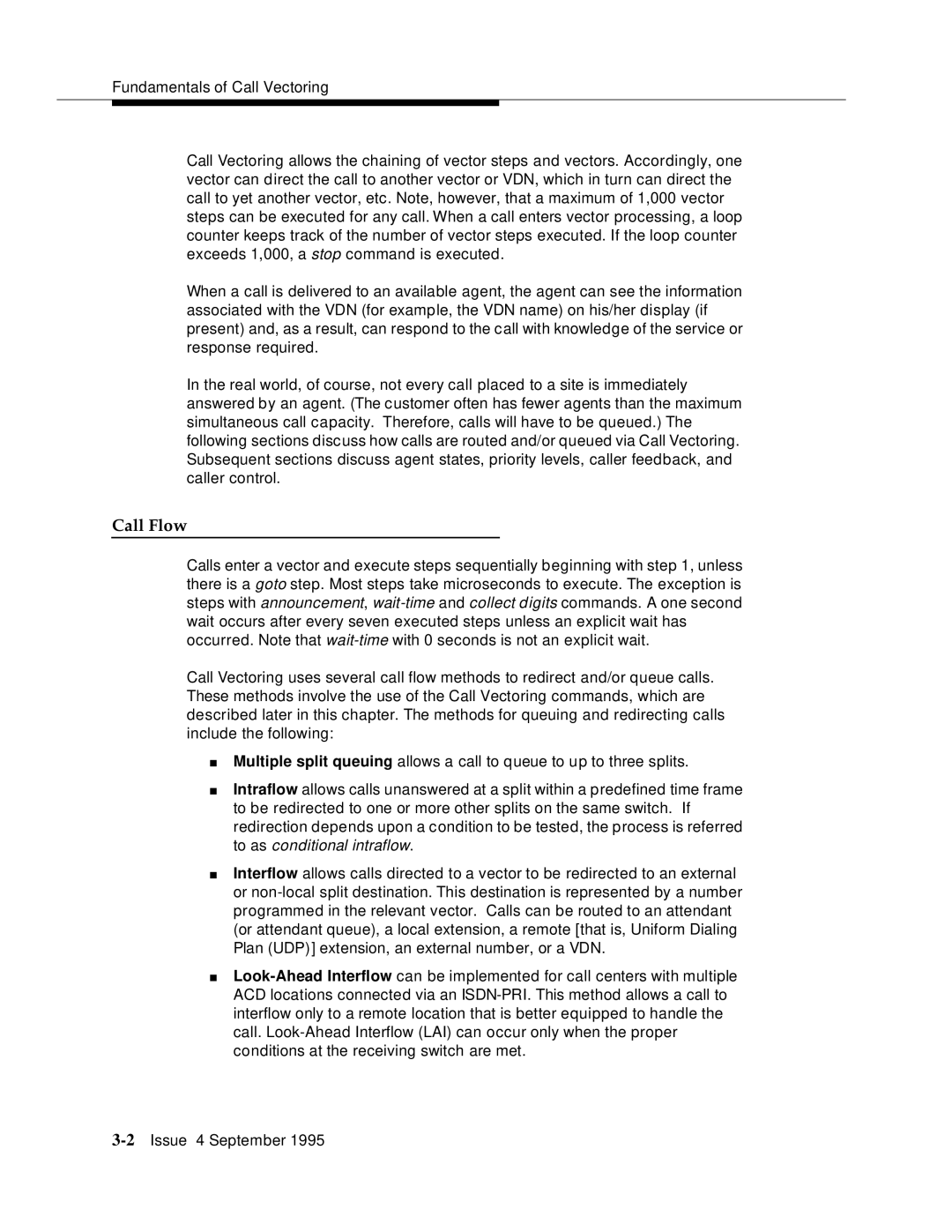
Fundamentals of Call Vectoring
Call Vectoring allows the chaining of vector steps and vectors. Accordingly, one vector can direct the call to another vector or VDN, which in turn can direct the call to yet another vector, etc. Note, however, that a maximum of 1,000 vector steps can be executed for any call. When a call enters vector processing, a loop counter keeps track of the number of vector steps executed. If the loop counter exceeds 1,000, a stop command is executed.
When a call is delivered to an available agent, the agent can see the information associated with the VDN (for example, the VDN name) on his/her display (if present) and, as a result, can respond to the call with knowledge of the service or response required.
In the real world, of course, not every call placed to a site is immediately answered by an agent. (The customer often has fewer agents than the maximum simultaneous call capacity. Therefore, calls will have to be queued.) The following sections discuss how calls are routed and/or queued via Call Vectoring. Subsequent sections discuss agent states, priority levels, caller feedback, and caller control.
Call Flow
Calls enter a vector and execute steps sequentially beginning with step 1, unless there is a goto step. Most steps take microseconds to execute. The exception is steps with announcement,
Call Vectoring uses several call flow methods to redirect and/or queue calls. These methods involve the use of the Call Vectoring commands, which are described later in this chapter. The methods for queuing and redirecting calls include the following:
■Multiple split queuing allows a call to queue to up to three splits.
■Intraflow allows calls unanswered at a split within a predefined time frame to be redirected to one or more other splits on the same switch. If redirection depends upon a condition to be tested, the process is referred to as conditional intraflow.
■Interflow allows calls directed to a vector to be redirected to an external or
■
